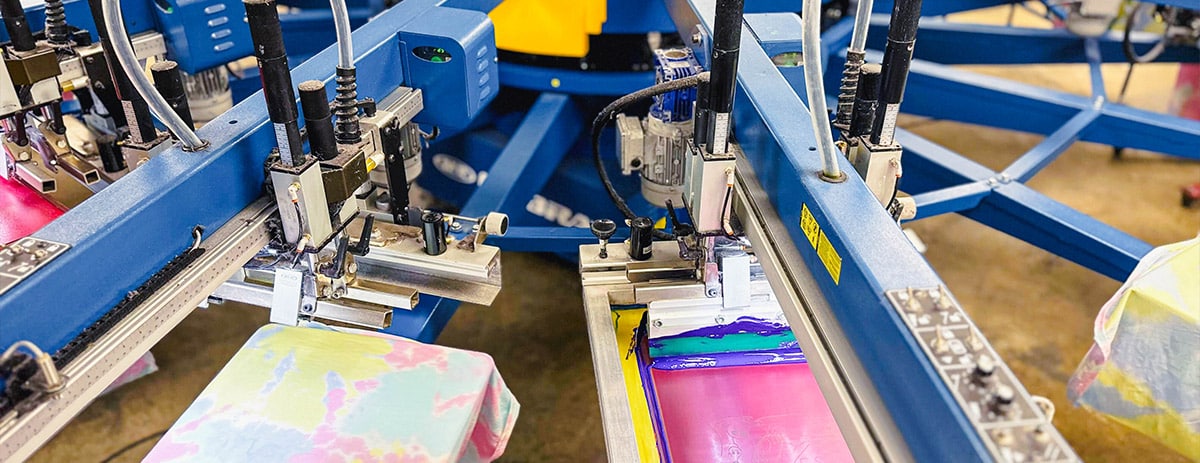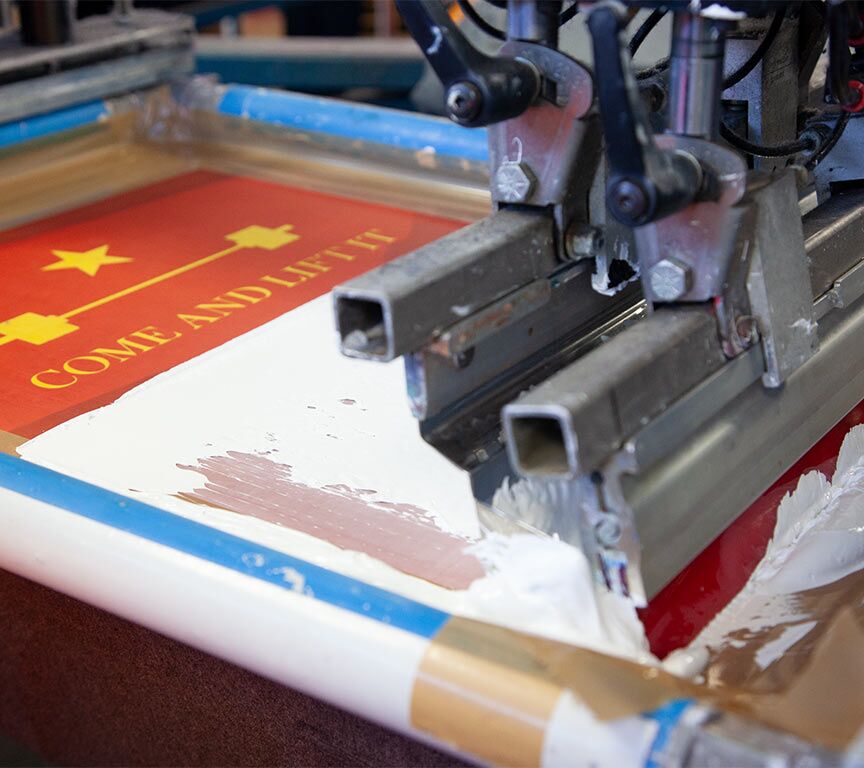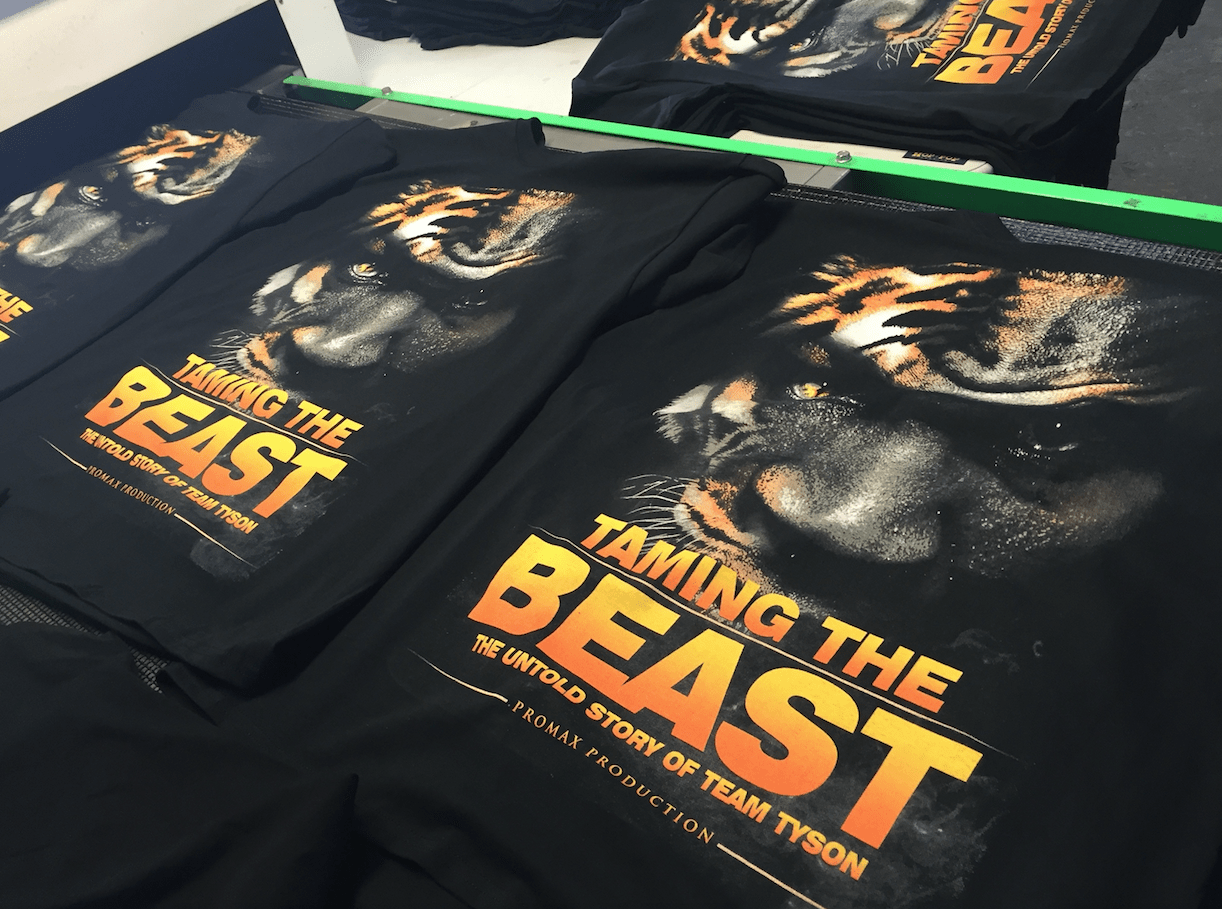High-End Silk Screen Printing for Premium Garments
Wiki Article
Display Printing Uncovered: Everything You Need to Understand About Tee and Garment Printing Techniques
If you have actually ever asked yourself exactly how those dynamic styles wind up on your favorite tee shirts, you remain in the ideal place. Display printing is a fascinating approach that combines art with technique, providing limitless opportunities for creativity. Recognizing the principles, from equipment to ink choices, can considerably influence your results. Prepared to check out the important elements that make screen printing an art type? Let's uncover the information that can elevate your projects.
The Basics of Display Printing: How It Works
When you plunge right into screen printing, you'll uncover it's both a scientific research and an art. At its core, display printing involves developing a stencil, or display, that permits ink to go through just in details locations (screen printing kit). You begin by picking your layout and preparing your screen with a light-sensitive solution. As soon as you reveal this emulsion to light, it sets, leaving your layout as an adverse space.Next, you'll mix your inks and prepare your printing surface. Position the display over the fabric, after that make use of a squeegee to push ink through the screen onto the garment. This process needs accuracy, as you desire clear, lively prints. After printing, you'll heal the ink with warmth, guaranteeing it complies with the fabric and lasts with cleans. Each action is essential, and grasping them will elevate your screen printing skills, changing easy garments into unique, expressive items.
Kinds Of Screen Printing Techniques
When you grasp the essentials of display printing, it's time to check out the various methods that can elevate your designs. One popular method is typical screen printing, where ink is pressed with a stenciled screen. This method is wonderful for vibrant, vibrant shades. After that there's water-based ink printing, which provides a softer feeling and is environmentally friendly, but it calls for a different technique to healing.One more alternative is plastisol printing, known for its toughness and vivid shades, making it a preferred for many brands. Experiment with halftone printing to create slope results and complex styles.
Necessary Tools for Screen Printing
To achieve stunning results in screen printing, having the appropriate equipment is basic. You'll need a strong screen printing frame, which holds the mesh that transfers your layout onto the garment. Next off, spend in top notch squeegees; these are essential for using ink uniformly across the display.Choosing the Right Inks and Products
When picking inks and materials for screen printing, you need to take into consideration the sort of ink that works ideal for your project. Consider textile compatibility to guarantee your styles look last and terrific long. Check out eco-friendly ink choices to make your printing process a lot more sustainable.Sorts Of Screen Inks
Choosing the ideal display ink is vital for achieving lively, durable prints that meet your project's requirements. There are numerous types of screen inks to check out. Specialty inks, such as glow-in-the-dark or metallic, can add one-of-a-kind impacts to your styles.
Material Compatibility Factors To Consider
Recognizing material compatibility is essential for attaining high-grade screen prints, especially because various products respond uniquely to different inks. Always test your inks on example textile to guarantee they stick effectively and keep shade stability. In addition, maintain in mind that textile weight and appearance can affect the final outcome, so choosing the ideal ink and material combination is essential for your task's success.Eco-Friendly Ink Options
Green inks are ending up being a popular selection for screen printers that wish to reduce their ecological effect while maintaining quality. When selecting inks, take into consideration water-based inks, which are much less hazardous and easier to cleanse up compared to conventional solvents. These inks bond well with fabrics, supplying vivid results without toxic chemicals. You may additionally explore eco-solvent inks that make use of less unpredictable natural substances (VOCs), making them a much safer choice for both your wellness and the planet.In addition, search for inks made from renewable energies, such as soy or vegetable-based choices. By choosing the right inks and materials, you'll not only develop spectacular designs however also contribute to an extra lasting printing procedure. Make the switch, and your prints will show your dedication to the setting!
Preparing Your Style for Screen Printing

File Layout Requirements
To guarantee your layout looks sharp and lively on textile, you'll require to pay very close attention to file layout requirements for screen printing. Begin with vector files like AI or EPS, as they can be scaled without losing quality. If you use raster pictures, go with high-resolution data, such as TIFF or PNG, preferably at 300 DPI. Stay clear of making use of JPEGs, as they can shed quality when resized. Make certain your style has a transparent background to stop undesirable white sides on your prints. Keep color settings in mind; CMYK is common for display printing, so transform your RGB develops accordingly - screen printing kit. By adhering to these guidelines, you'll establish your artwork up for a successful print.Shade Splitting Up Techniques
Shade splitting up is a crucial step in preparing your layout for display printing, and understanding it can substantially enhance your print top quality. You'll need to damage your layout right into private shades, t-shirt printing as each color needs a different display during printing. This accuracy not just ensures precise shade representation but also improves the printing process.Resolution and Dimension
Attaining the most effective cause display printing starts with assuring your layout has the appropriate resolution and dimension. Preferably, your art work ought to go to the very least 300 DPI (dots per inch) for sharp, clear prints. If you utilize lower resolution, your last product may look unprofessional and pixelated.When it involves size, think about the measurements of your print location. Design your artwork to match the last print size, ideally developing it in the real measurements you'll be printing. In this manner, you'll prevent any type of unexpected scaling concerns.
Always inspect your design in both vector and raster styles. Vector graphics can be scaled without losing high quality, making them optimal for screen printing. Preparing correctly will guarantee your style looks fantastic on every garment!
Step-by-Step Screen Printing Refine
Display printing is a vibrant process that enables you to develop dynamic designs on numerous surface areas. To begin, you'll need a display, solution, and your selected ink. Initially, prepare your screen by cleaning it extensively. Next off, apply the emulsion evenly and let it dry in a dark area. As soon as completely dry, subject your display to light with your layout placed on it, which will certainly set the solution where the light hits, developing a stencil - screen printing kit.Put ink onto the screen and utilize a squeegee to push the ink with the pattern onto the textile. Lift the display thoroughly and allow the print completely dry. You have actually effectively screen published your layout.
Tips for Successful Display Printing Projects
While you're diving into your screen printing projects, keep in mind that prep work is essential to success. Start by collecting all your materials-- inks, garments, mops, and screens. A tidy work area assists stop unwanted errors, so clean up before you begin.Following, confirm your artwork is high-resolution and effectively sized for your garment. Check your display for correct direct exposure and clean it completely to avoid smudges. When blending your inks, follow the maker's standards to achieve the best consistency.
During printing, use even stress with your squeegee for regular outcomes. Don't rush; take your time to validate each print fulfills your criteria. After printing, allow your garments completely dry completely before managing or packaging them.
Lastly, always keep an example of your help future referral. This method, you can assess your progression and boost your strategies with time. Satisfied printing!

Often Asked Inquiries
For how long Does It Take to Establish a Display Printing Work?
Establishing a screen printing task generally takes about half an hour to an hour. You'll prepare the screens, mix inks, and adjust the press. The moment differs based upon complexity and experience, so stay organized!Can I Publish on Various Textile Keys In Making Use Of the Same Method?
Yes, you can print on different textile types making use of the exact same strategy, but you'll need to change your inks and setups. Some textiles absorb ink in different ways, so experimenting guarantees the most effective outcomes for each product.What Are Common Blunders to Stay Clear Of in Display Printing?
When display printing, stay clear of typical errors like making use of the incorrect ink, ignoring appropriate direct exposure times, or missing pre-press checks. Constantly check your configuration and keep clean screens to assure quality outcomes each time.Just How Can I Appropriately Clean and Preserve My Screen Printing Equipment?
To appropriately clean and preserve your screen printing devices, you must frequently wash displays with appropriate solvents, examine squeegees for wear, and ensure all devices are stored dust-free and completely dry. Uniformity avoids expensive repairs and boosts efficiency.Is Screen Printing Ecologically Friendly Contrasted to Various Other Approaches?
Display printing can be a lot more eco-friendly than various other techniques, especially if you make use of water-based inks and eco-conscious materials. By selecting sustainable supplies and techniques, you minimize waste and decrease your influence on the earth.Screen Printing Uncovered: Everything You Need to Know About Tee Shirt and Garment Printing Methods
At its core, screen printing includes creating a pattern, or display, that permits ink to pass with just in certain areas. Position the display over the fabric, after that use a squeegee to push ink through the screen onto the garment. One prominent technique is standard screen printing, where ink is pushed through a stenciled screen.When choosing inks and products for screen printing, you need to take into account the kind of ink that functions best for your task.
Report this wiki page